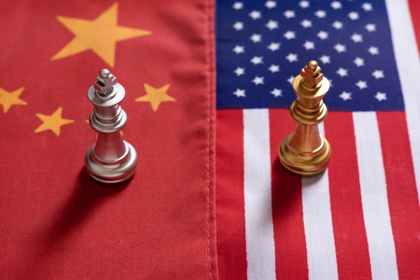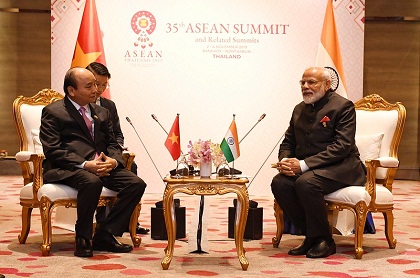Gravitas – Chinese investment in India’s tech and social media
Amit Bhandari, Fellow, Energy and Environment Studies was interviewed by WION News. Watch the interview here
 Courtesy:
Courtesy:
Amit Bhandari, Fellow, Energy and Environment Studies was interviewed by WION News. Watch the interview here
 Courtesy: Shutterstock
Courtesy: Shutterstock
India’s status as a key geoeconomic power calls for indigenous R&D of critical information-communication-technology infrastructure at least a generation ahead of time. India must activate the exploratory R&D phase on sixth-generation (6G) network technologies immediately to safeguard its strategic autonomy in the emerging era of informationalised warfare
 Courtesy: Shutterstock
Courtesy: Shutterstock
The Committee on Foreign Investment in the United States (CFIUS) is an inter-agency body which reviews in-bound foreign investments for their impact on national security. The Treasury Department recently proposed draft regulations, strengthening it. An analysis of the effect these amendments have had – and their applicability in an Indian context
 Courtesy: Shutterstock
Courtesy: Shutterstock
In India, China’s tech giant companies and venture capital funds have become the primary vehicle for investments in the country – largely in tech start-ups. This is different from other emerging markets where Chinese investments are mostly in physical infrastructure. Chinese FDI into India is small at $6.2 billion, but its impact is already outsized, given the increasing penetration of tech in India
 Courtesy: Shutterstock
Courtesy: Shutterstock
Chinese investments in India’s soft power sectors, such as smartphones and apps, glitter like a diamond necklace around India. Here is anecdotal evidence of their reach and capacity to harvest more data than necessary, with recommendations for their regulation
 Courtesy:
Courtesy:
Our International Security Fellow, Sameer Patil was interviewed by Channel News Asia. Watch the interview here
 Courtesy:
Courtesy:
Neelam Deo, Director and co-founder was quoted in The Times. Read the article here
 Courtesy: MEA/Flickr
Courtesy: MEA/Flickr
There have been mixed reactions to India’s not signing on to the Regional Comprehensive Economic Partnership. India is often criticised for abstaining from trade agreements and being a protectionist nation, but in fact, the reverse is true. The country’s trade to GDP ratio of 43% is higher than China’s 38% and the U.S.’ 27%. This shows how important trade is for India, particularly if it wants to reach the 2024 goal of being a $5- trillion economy.
 Courtesy: Shutterstock
Courtesy: Shutterstock
The protests sweeping the world have reached Pakistan. The issues are similar, such as corruption and rising living costs, but there are significant differences between the Pakistani and global protests.
 Courtesy: Forum 2000
Courtesy: Forum 2000
Peaceful dissent was the original animus for the formation of the Forum 2000 Foundation. Started by the late Czech dissident Vaclav Havel, the conference, held in Prague every September, offers a platform to experts and activists from around the world to revisit ideas about pacifism and protest